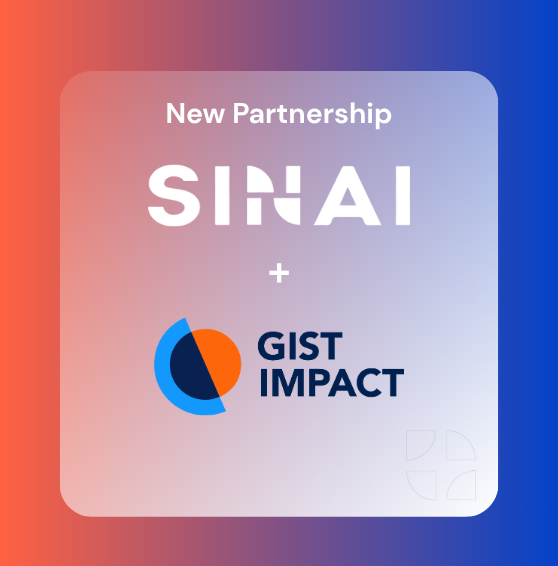%20(1).png)
Why Engaging Your Top Suppliers Is the Fastest Route to Scope 3 Decarbonization
Scope 3 is the climate world’s favorite troublemaker. If Scope 1 and 2 are the emissions you can see, Scope 3 is the elephant you feel but rarely measure—yet it typically makes up 70–90 percent of a manufacturer’s total footprint.
Regulators have noticed. Europe’s CSRD, California’s SB 253, and a wave of similar rules now require companies to report—and defend—full value-chain emissions. Investors expect nothing less.
CSRD disclosures begin phasing in this fiscal year; California’s SB 253 follows in 2026. Overseas suppliers serving EU and US brands will feel the ripple effects immediately.
So the question is no longer whether to disclose Scope 3, but how to do it quickly, credibly, and in a way that drives real cuts. The answer breaks into three moves: measure, manage, decarbonize.
SINAI at a Glance
With SINAI you start on day one with:
- 50,000+ emission factors covering Scope 1, 2, and all 15 Scope 3 categories
- Flexible methods—spend-based, LCA-based, supplier-specific—built in
- Premium sources (Ecoinvent, IEA) plus public datasets (IPCC, DEFRA, USEEIO, Agribalyse)
- AI mapping that ingests raw purchasing and logistics files, auto-assigns factors, and updates in real time
- A single platform that turns supplier data into live cost-and-carbon roadmaps
Measure → Manage → Decarbonize
Measure — achieve 100 % Scope 3 coverage, every category
Getting Scope 3 right starts with complete data. Drag-and-drop your PO file; SINAI’s AI matches each line to the correct factor in minutes and refreshes automatically as suppliers share fresh data. You launch with 100% coverage and an audit-ready inventory—no spreadsheets, no extra licences.
Spotlight | Grupo Boticário strengthens Scope 3 reporting with SINAI
- Challenge: With Scope 3 representing over 97% of total emissions, Grupo Boticário needed a complete and reliable inventory to set science-based targets. Data collection across multiple teams and emission sources was the biggest hurdle.
- Solution: Partnering with SINAI, the company conducted a relevance and materiality assessment, mapped new emission categories, and digitized its full inventory in an automated, auditable system — centralizing collaboration across sustainability, finance, operations, and R&D.
- Result: Grupo Boticário now has a comprehensive, verified Scope 3 inventory, serving as the foundation for SBTi-aligned targets and a decarbonization strategy that engages suppliers and drives value chain reductions.
Manage — collect supplier data without survey fatigue
A small set of vendors usually drives half the footprint. Smart ranking flags those high-impact suppliers and sends them pre-filled forms inside a no-code portal. Every entry is time-stamped for finance, while suppliers avoid marathon questionnaires. Accuracy improves fast, engagement stays high.
Decarbonize — turn data into supplier-level roadmaps
With coverage secured, the platform shifts from counting tonnes to cutting them. Each supplier record feeds scenario models—material swaps, transport changes, renewable-energy deals—complete with cost, carbon, and pay-back curves. Procurement sees quick wins, finance sees ROI, and CSOs track live progress against SBTi and CSRD trajectories—no late-night spreadsheets.
Beyond Data: From Sharing to Co-Creation
What looks like a data challenge is really a relationship challenge. When suppliers see clear value—smart defaults, short forms, transparent benchmarks—they lean in. Joint projects follow: a resin swap that cuts emissions 40 percent, a pooled renewable-energy purchase that locks in lower-carbon power at scale. Compliance becomes a competitive edge.
Why Platform Choice Matters
A purpose-built carbon platform moves you from dashboards full of assumptions to insights you can act on. SINAI automates the grunt work—data cleaning, factor sourcing, supplier matching—so climate teams focus on strategy, not spreadsheets. Centralized engagement keeps conversations traceable; AI refinements keep numbers trustworthy; integrated modelling shows exactly where carbon and cost intersect.
When category managers see cost and carbon side-by-side, low-carbon steel or recycled PET stop being premium add-ons and become the logical next RFQ spec.
The Path Forward
Regulation is tightening, capital is watching, and Scope 3 remains the biggest lever most manufacturers haven’t pulled. With complete data, streamlined supplier input, and live cost-carbon analytics, you can move from disclosure to decisive action—today.
Next step: See SINAI in Action



.png)







